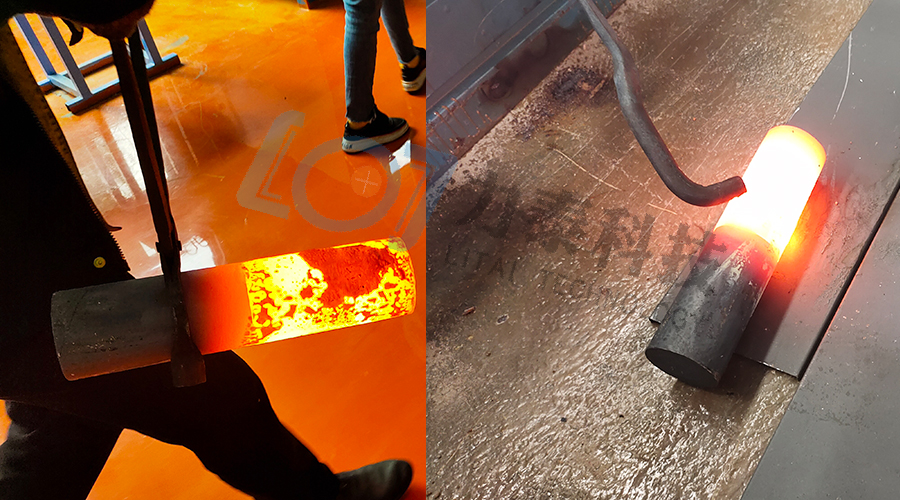
Comparison of the depth of oxidation removal achieved by manual traditional descaling and by high-pressure water descaling
发布时间:
2025-05-13
In the forging production process, removing the oxide scale on the surface of the forging is a crucial step to ensure product quality. The traditional manual method of removing the oxide scale and the high-pressure water descaling method are two common approaches, and they exhibit significant differences in multiple aspects.

From the perspective of efficiency, the traditional manual method of removing oxide scale relies on workers using hand tools to remove the oxide scale through grinding and scraping. This method not only involves high labor intensity but also has a slow processing speed. When dealing with large quantities of forgings, it is difficult to meet the production rhythm requirements. In contrast, the high-pressure water descaling method for removing oxide scale utilizes the powerful impact force of the high-pressure water jet, which can quickly remove the oxide scale and achieve automated continuous operation. This can significantly increase production efficiency and effectively shorten the processing cycle.
In terms of cost, manual removal of oxide scale requires a significant investment of manpower. As the cost of labor keeps rising, the long-term cost expenditure cannot be underestimated. Moreover, manual operation also involves additional costs such as tool wear and replacement. Although the high-pressure water descaling equipment has a relatively high initial procurement cost, during operation, only a small number of operators are needed for monitoring, and the equipment is durable, reducing labor and tool costs. From a long-term perspective, it has a more cost-effective advantage.
In terms of the descaling effect, the manual operation is influenced by the workers' experience and physical strength, resulting in varying degrees of oxide scale removal. There is a risk of local residue or excessive grinding, which can affect the surface accuracy and quality of the forgings. High-pressure water descaling, through precise control of parameters such as water pressure and water flow angle, can uniformly and thoroughly remove the oxide scale, making the forging surface smoother and meeting the requirements of high standards of processing.
Environmental protection performance is also an important difference between the two. The metal debris, dust and other pollutants generated by manual grinding can easily cause environmental pollution in the workshop and harm the health of workers; while the wastewater produced by high-pressure water descaling can be purified through the recycling treatment system and reused, reducing water resource waste and environmental pollution, and better conforming to the current green production concept.
In conclusion, manual traditional descaling and high-pressure water descaling for removing oxide scale each have their own characteristics. However, in the modern forging industry that strives for high efficiency, low cost, high quality, and environmental protection, high-pressure water descaling for removing oxide scale is gradually becoming the preferred process for enterprises due to its significant advantages.

Related News







